[Grammar] #17 -(으)ㄴ 후에
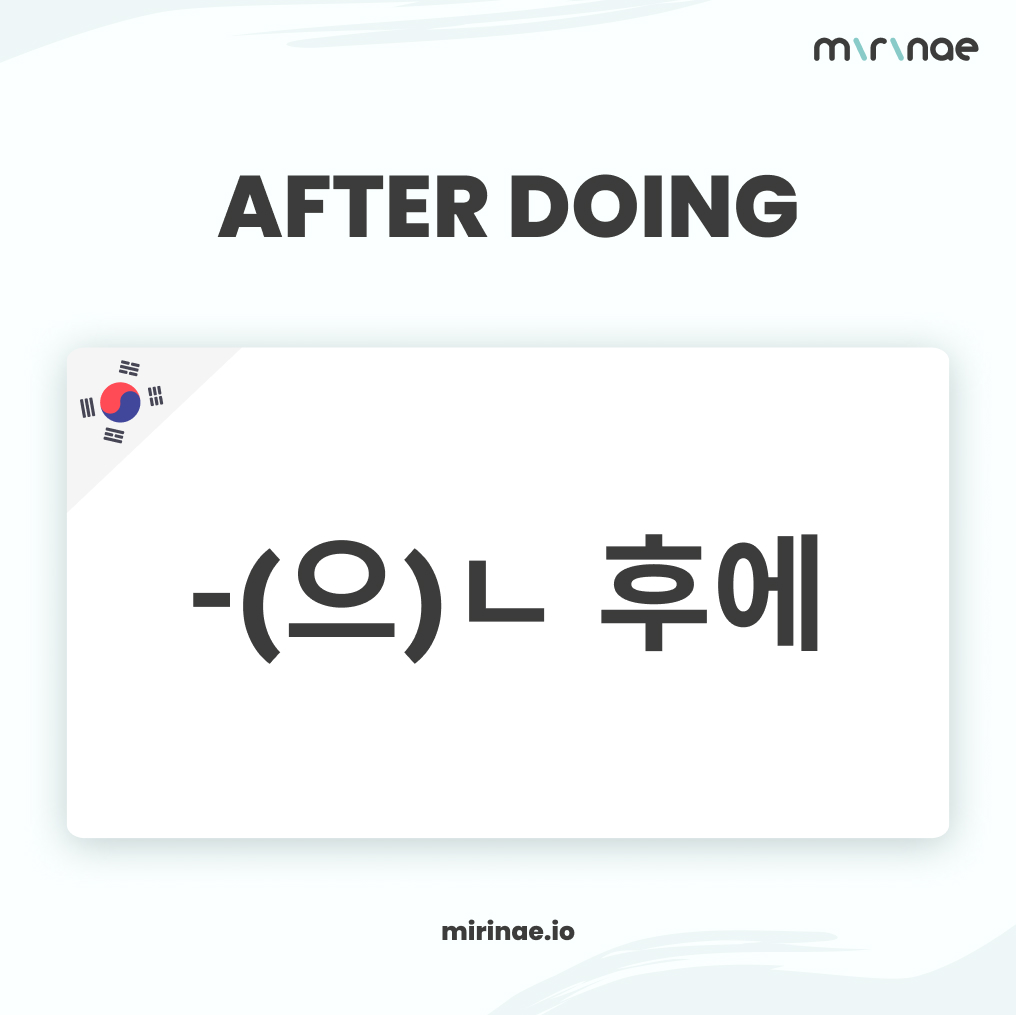
[Grammar] #17 -(으)ㄴ 후에 Mirinae May 31, 2024 after doing -(으)ㄴ 후에 means “after doing” and is attached to an action verb, indicating the following clause happens after the action in the preceding clause. dialogue A: 한국어를 배운 후에 뭐 하고 싶어요? What do you want to do after learning Korean? B: 졸업한 후에 […]
[Grammar] #16 -기 전에
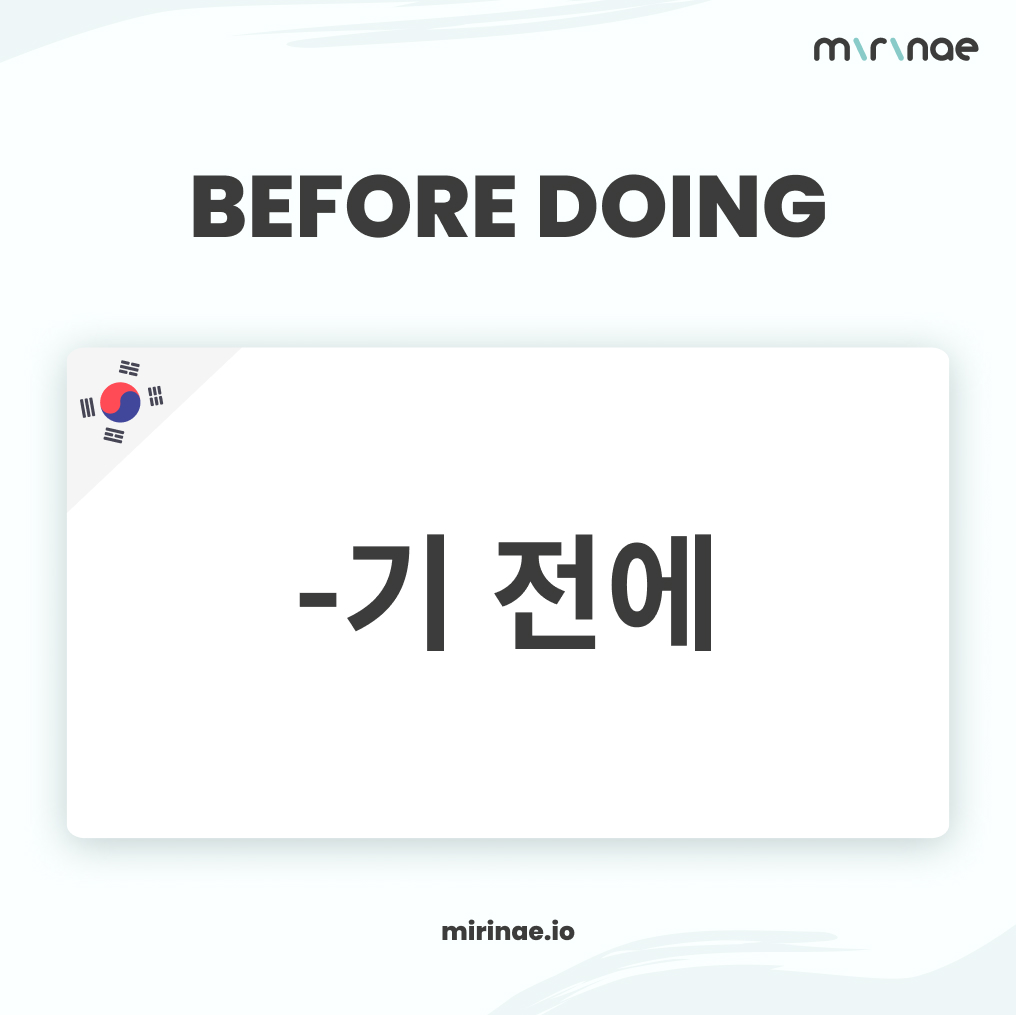
[Grammar] #16 -기 전에 Mirinae May 31, 2024 before doing -기 전에 is used to indicate that the action in the following clause occurs before the action in the preceding clause. dialogue A: 이제 운동을 시작할까요? Shall we start working out now? B: 운동하기 전에 먼저 스트레칭을 해야 해요. You should stretch before working […]
[Grammar] #15 -지만
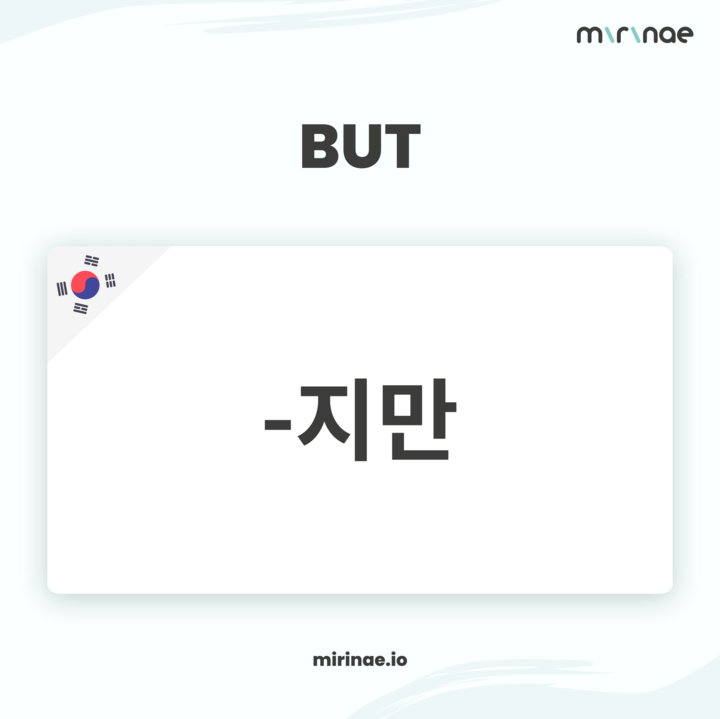
[Grammar] #15 -지만 Mirinae May 31, 2024 but -지만 shows that one accepts the contents before this pattern as true but indicates that something contrary or different is in the following clause. dialogue A: 점심 메뉴로 떡볶이 어때요? How about tteokbokki for lunch? B: 좋아요. 떡볶이는 조금 맵지만 맛있어요. Good. Tteokbokki is a bit […]
[Grammar] #14 -아/어/여서
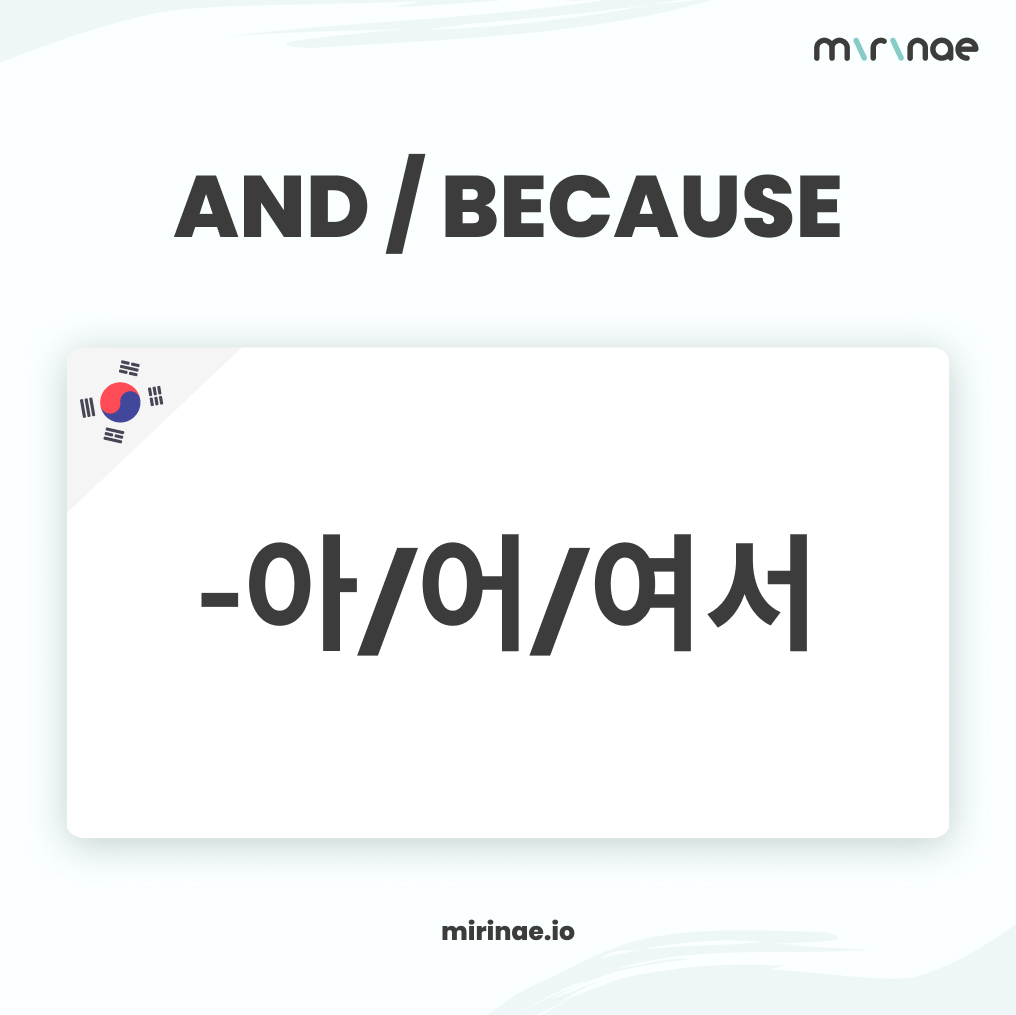
[Grammar] #14 -아/어/여서 Mirinae May 31, 2024 in order to -아서/어서/여서 shows a time ordering or a reason. indicating the events happened in sequence indicating the preceding clause is a reason or cause for the following dialogue A: 어제 오후에 뭐 했어요? What did you do yesterday afternoon? B: 친구를 만나서 같이 쇼핑을 했어요. […]
[Grammar] #13 -(으)러
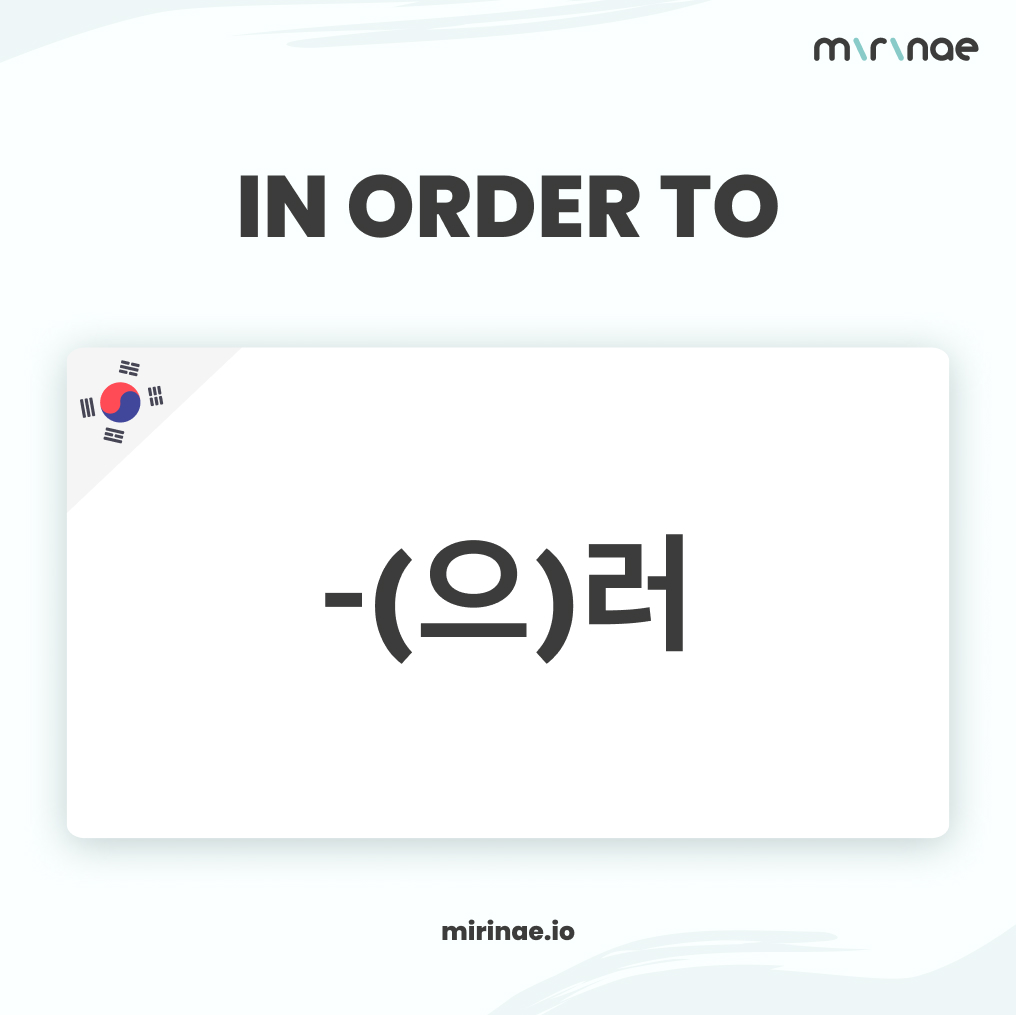
[Grammar] #13 -(으)러 Mirinae May 30, 2024 in order to The connecting form -(으)러 shows the purpose of an action such as going and coming. dialogue A: 주말에 뭐 할 거예요? What will you do on the weekend? B: 단풍을 보러 설악산에 갈 거예요. I will go to Mt.Seorak to see the autumn leaves. […]
[Grammar] #12 -고 있다
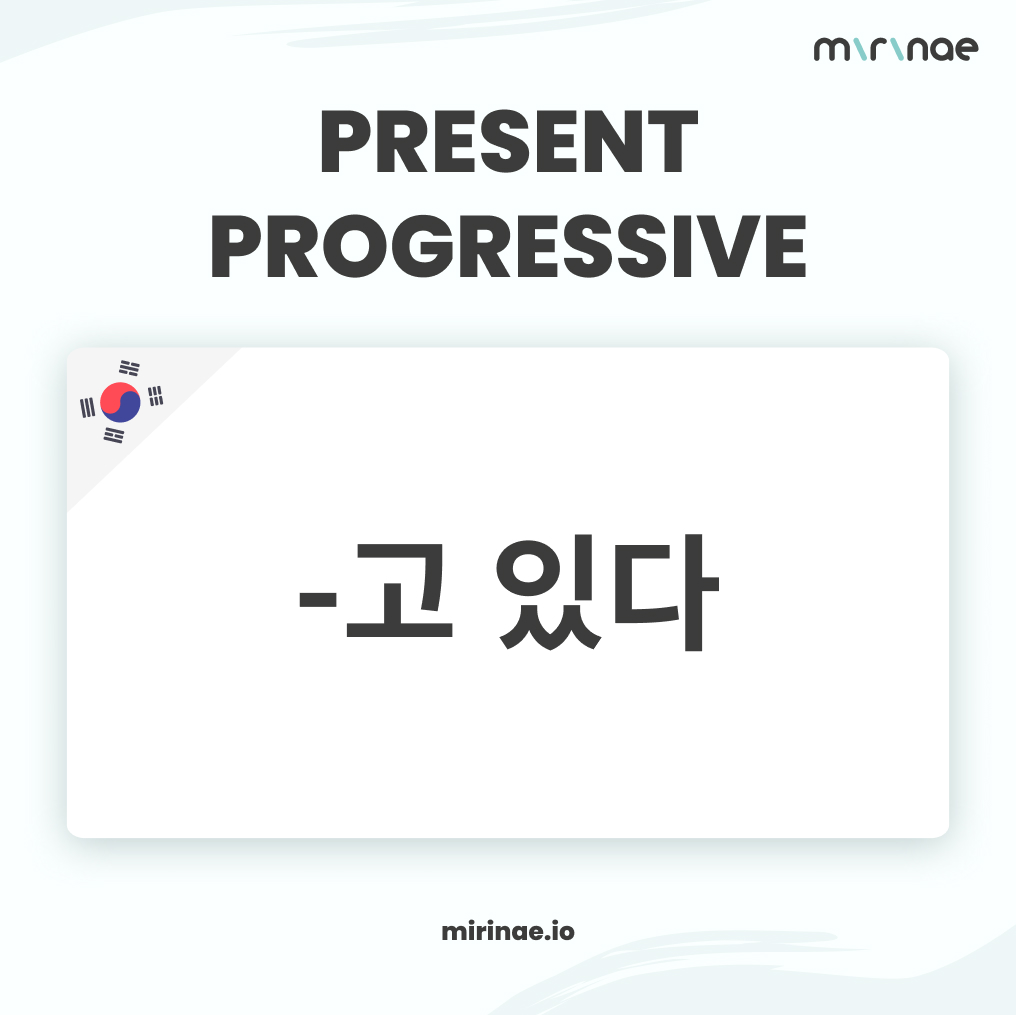
[Grammar] #12 -고 있다 Mirinae May 30, 2024 present progressive (be-ing) -고 있다 indicates that the action or the result of the act mentioned in the preceding statement is ongoing. dialogue A: 지금 뭐 하고 있어요? What are you doing now? B: 도서관 앞에서 친구를 기다리고 있어요. I am waiting for my friend in […]
[Grammar] #11 -(으)니까
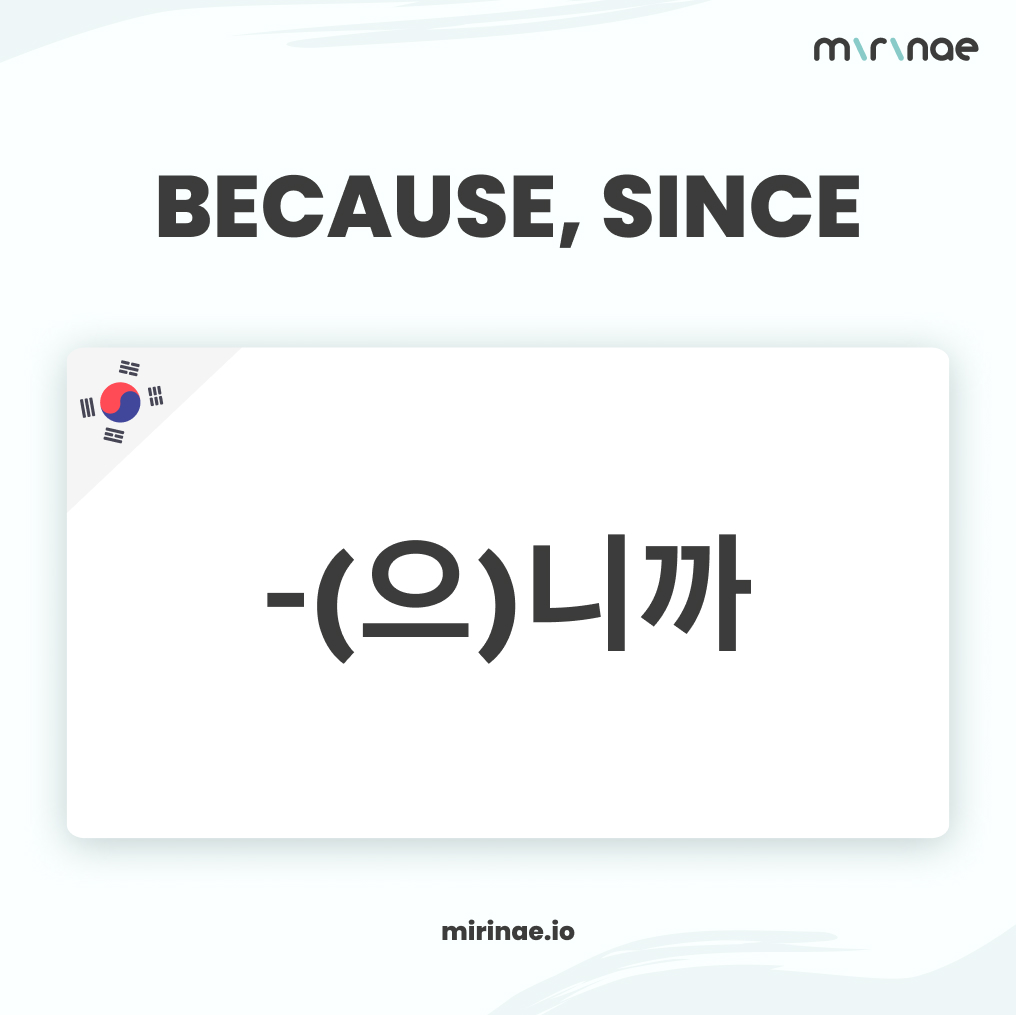
[Grammar] #11 -(으)니까 Mirinae May 30, 2024 because, since -(으)니까 used to emphasize that the preceding clause is the reason or the premise for the following clause. dialogue A: 오늘 저녁에 영화 볼래요? Do you want to see a movie this evening? B: 오늘은 약속이 있으니까 내일 볼까요? Since I have an appointment today, […]
[Grammar] #10 -고
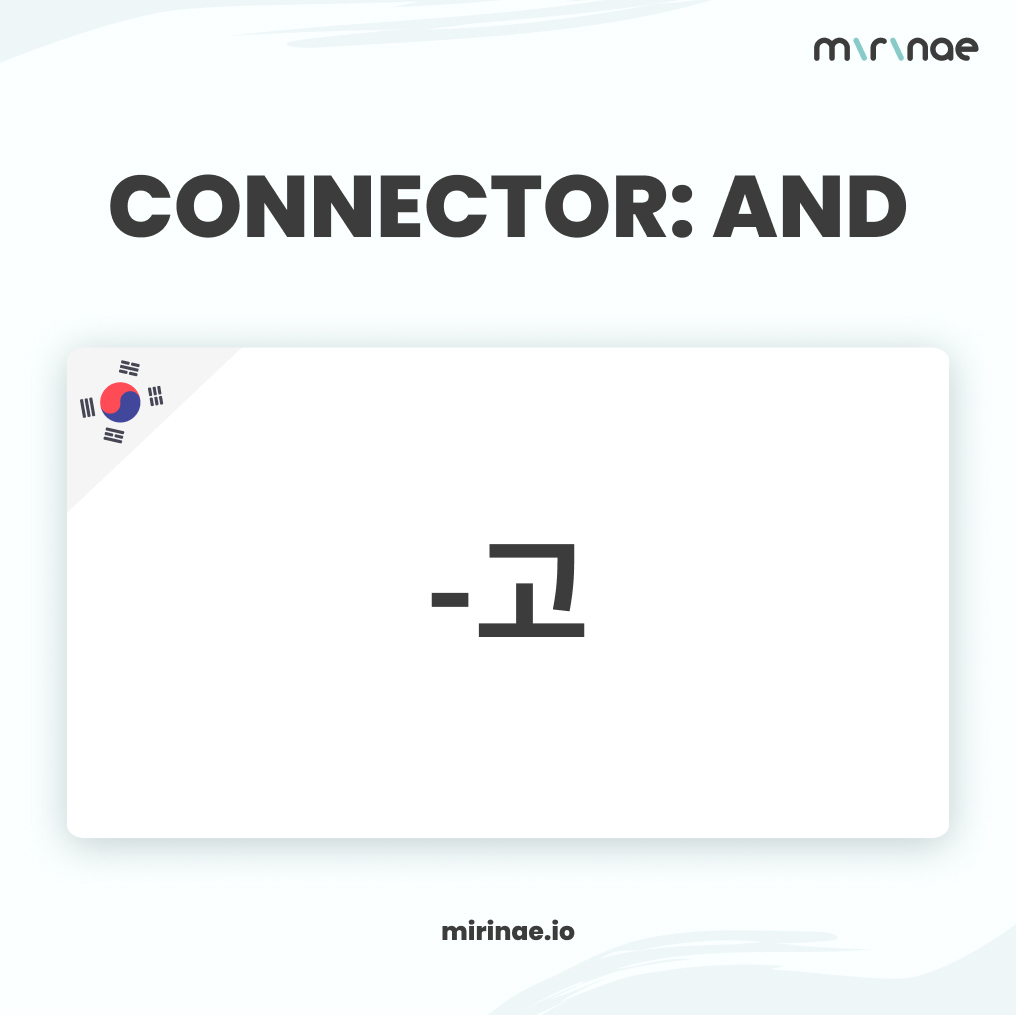
[Grammar] #10 -고 Mirinae May 29, 2024 and -고 means “and” in English. -고 is used to connect more than two actions or states. – when the preceding clause and the following clause happen in order – when listing more than two facts dialogue A: 크리스마스에 뭐 했어요? What did you do on Christmas? […]
[Grammar] #9 -ㄹ/을 거예요

[Grammar] #9 -ㄹ/을 거예요 Mirinae May 29, 2024 will, be going to Ending a sentence with -ㄹ/을 거예요 expresses a future occurrence or one’s will or guess. dialogue A: 저기 그림이 멋있어요! There is a nice picture. B: 사진을 찍을 거예요. I will take a picture. variants combines with : Action verbs & Descriptive […]
[Grammar] #8 -ㄹ/을 수 있다

[Grammar] #8 -ㄹ/을 수 있다 Mirinae May 29, 2024 can do / can be -ㄹ/을 수 있다 adds the meaning of “can do” or “can be” to the verb it follows. It expresses the ability to perform an action or the possibility of a state occurring. dialogue A: 전화를 받을 수 있어요? Can you talk […]

